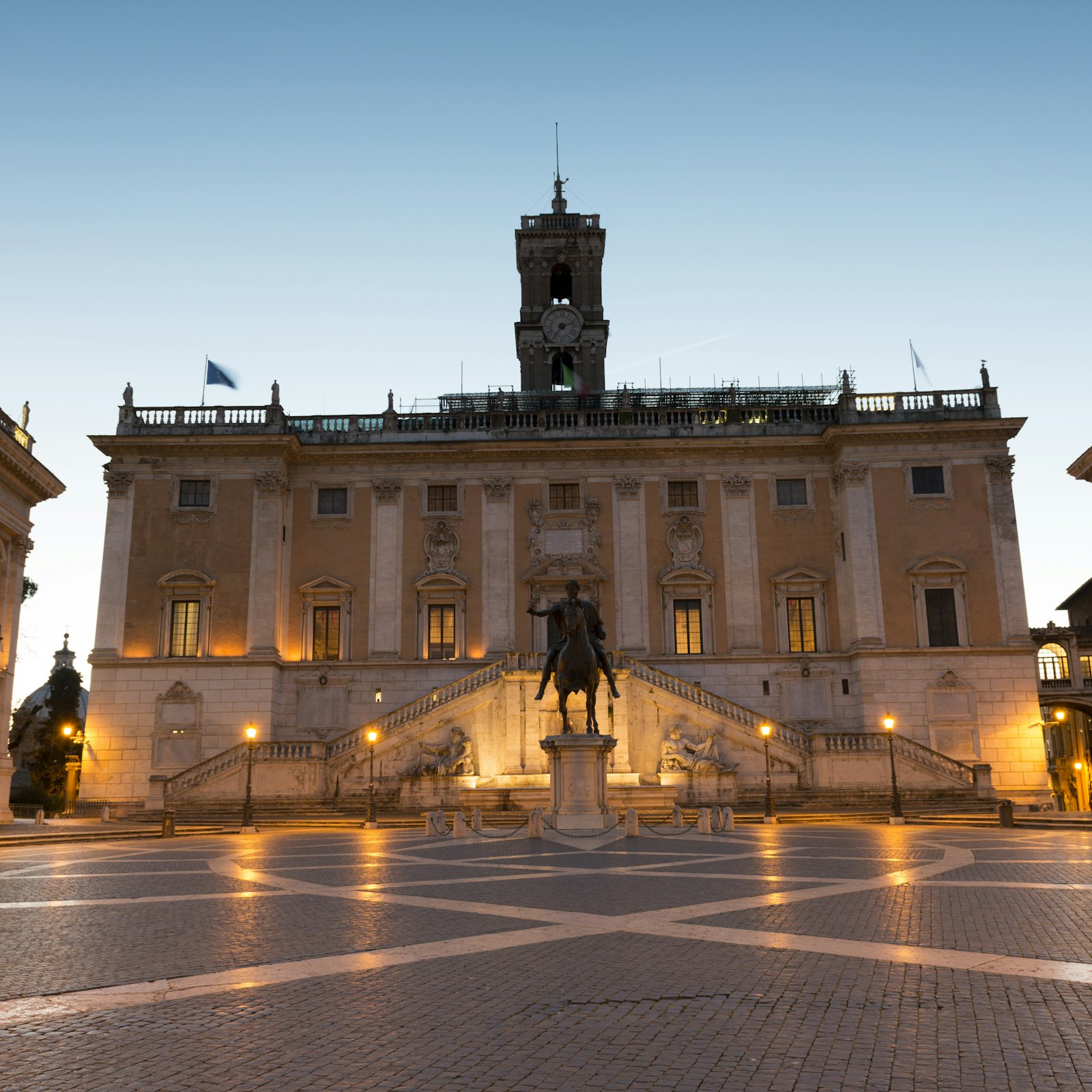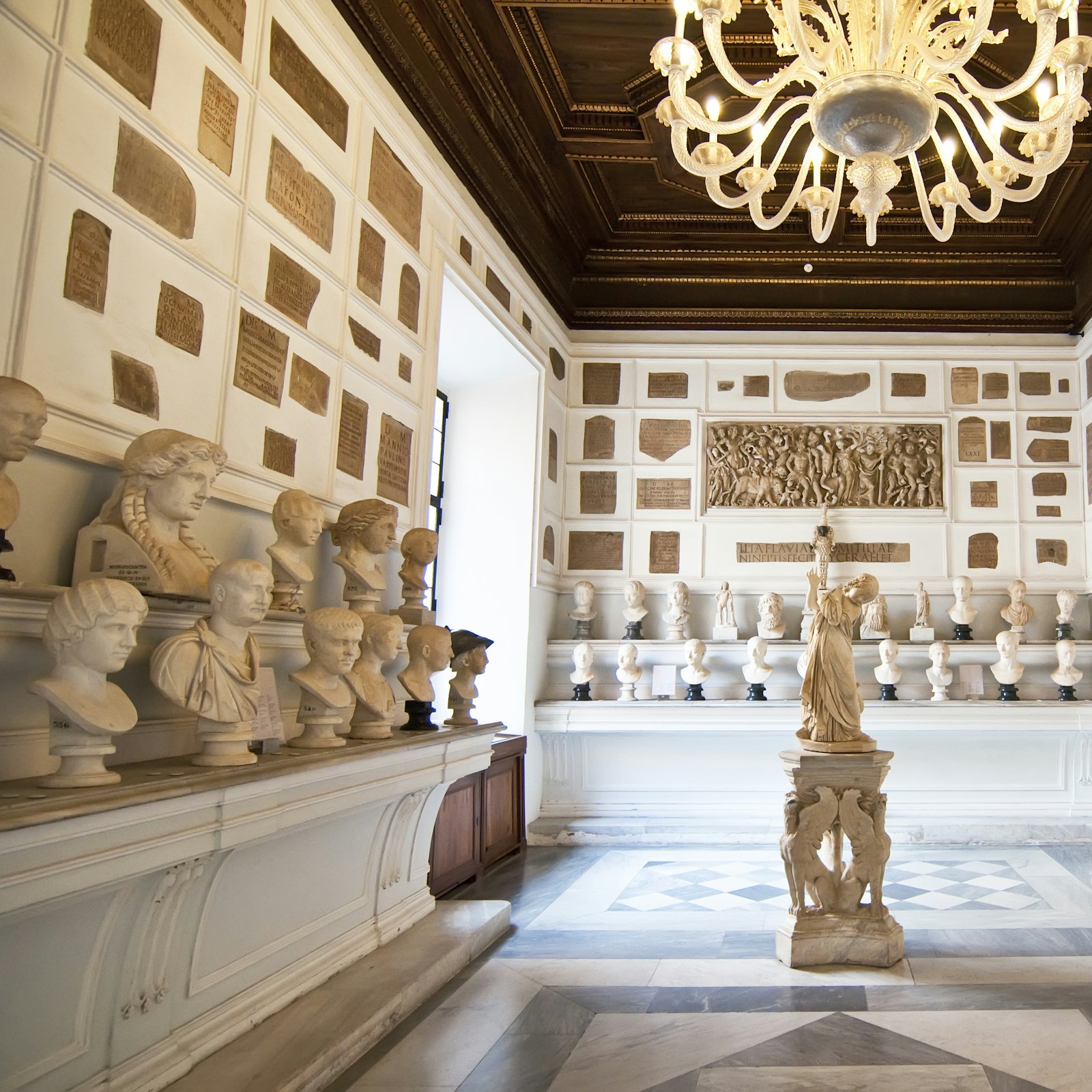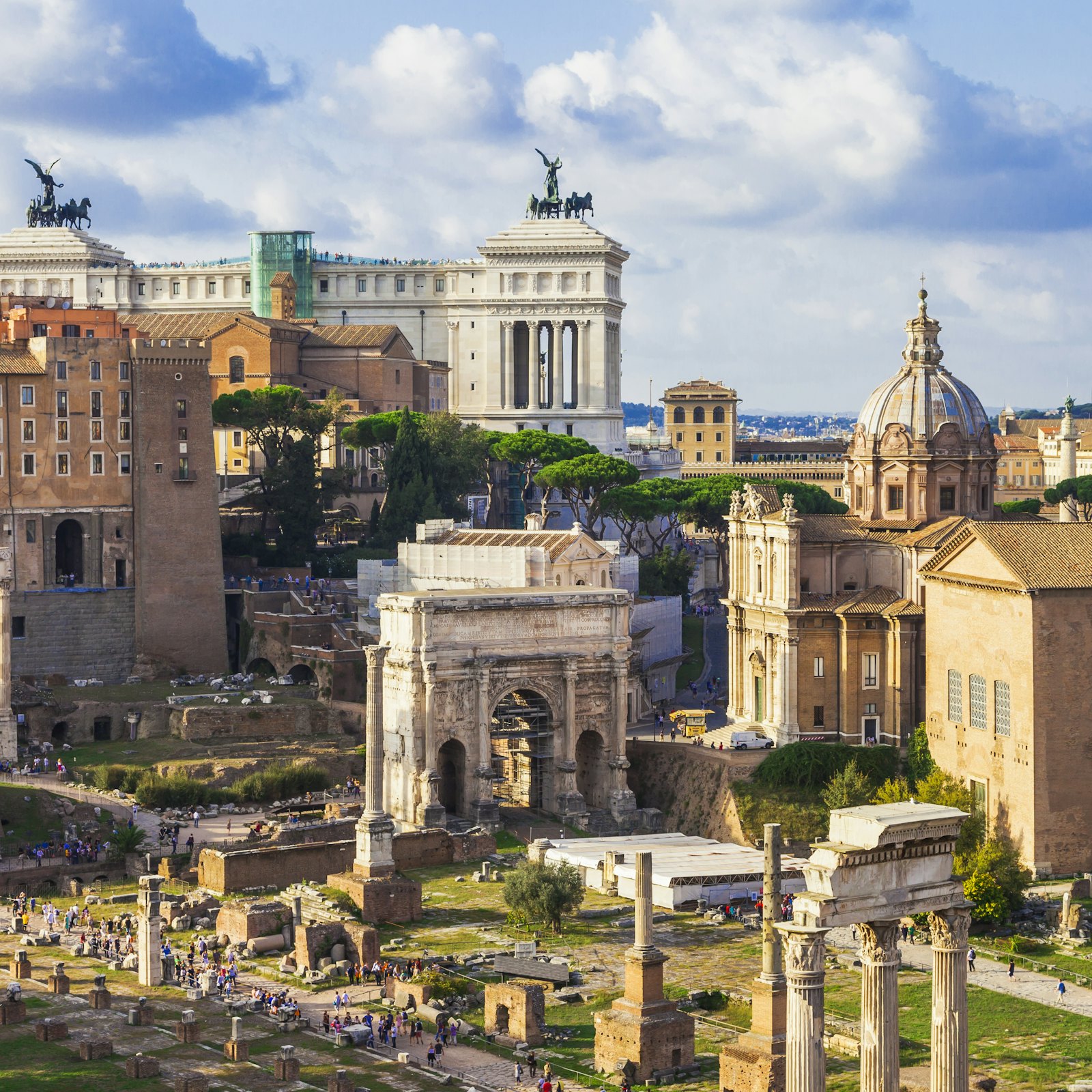Capitoline Museum: Tickets
One of the first museums in the world!
- Capitoline Museum: Entry Ticket
- Access to the temporary exhibition(s)

Capitoline Museum Tickets and Information
- Capitoline Museum Address: 1, Piazza del Campidoglio, 00186, Rome
- Opening Hours: 09:30 - 19:30
Is the Capitoline Museum Worth Visiting
- As one of the oldest museums in Rome, we definitely think so, yes.
What You See At Capitoline Museum
- Two grand palaces
- Art
- Sculptures
- Frescoes
{{ticket-block-triple}}
About Capitoline Museums
Sitting at the top of the Capitoline Hill in the heart of Rome, the Capitoline Museums offers a collection of art and history that defines the Eternal City. The museum, which is now spread over more than on building on the hill, was originally established by Pope Sixtus IV in 1471 which makes it one of the world's oldest public museums, which in itself means it hold centuries of Roman history and culture.
The museum was originally designed to house a collection of ancient bronzes but they have evolved over time and the collection has naturally expanded and now includes a wide range of artifacts, which is why the collection is now in multiple buildings. The museums' location on the Capitoline Hill also holds great significance in Rome, which adds further historical importance.
Capitoline Museums Main Buildings
- The Palazzo dei Conservatori and Palazzo Nuovo - The Capitoline Museums are housed in two grand palaces and each presents a different journey offering you a chance to explore the various facets of Roman history.
- Palazzo dei Conservatori - Is a treasure trove of classical sculptures including the iconic statue of Marcus Aurelius on horseback. The grandeur of the statue captures the essence of Roman imperial power. The museum is also home to the Capitoline Wolf, which is a symbol of Rome's legendary foundation story and features the she-wolf nurturing the twin brothers, Romulus and Remus that founded the city.
- Palazzo Nuovo - The second palace complements its counterpart by offering another significant collection of ancient sculptures and frescoes. Some of its highlights include the sculpture of the Capitoline Venus, a masterpiece that represents the timeless beauty of classical art, the statue of Dying Gaul alon with paintings of Roman life.
Popular Tickets
Popular Attractions
Capitoline Museum FAQs
- What is so special about the Capitoline Museum in Rome?
- The Capitoline Museum (Musei Capitolini) in Rome is the world's oldest public museum! It was established in 1471, and houses an extensive collection of ancient Roman art, sculptures, and artifacts.
- Where is the Capitoline Museum located?
- It is located on Capitoline Hill in Rome, at Piazza del Campidoglio, designed by Michelangelo.
- Who founded the Capitoline Museum?
- Pope Sixtus IV founded the museum in 1471 by donating a collection of bronze statues to the people of Rome.
- What are the highlights of the Capitoline Museum?
- Key highlights at the Capitoline Museum include the Dying Gaul, Capitoline Wolf, Equestrian Statue of Marcus Aurelius, and Capitoline Venus.
- How many buildings make up the Capitoline Museum in Rome?
- The museum consists of three buildings: Palazzo dei Conservatori, Palazzo Nuovo, and the Palazzo Senatorio.
- What is the significance of the Capitoline Wolf at the Capitoline Museum?
- The Capitoline Wolf is a bronze statue of a she-wolf suckling Romulus and Remus, which symbolises the mythological founding of Rome.
- Is Michelangelo connected to the Capitoline Museum in Rome?
- Yes, Michelangelo designed the Piazza del Campidoglio and the arrangement of the museum buildings, although he did not live to see the completion.
- How long does it take to visit the Capitoline Museum in Rome?
- It takes 2-3 hours to explore the main highlights at the Capitoline Museum in Rome.
- Is the Capitoline Museum accessible for people with disabilities?
- Yes, the museum provides facilities for accessibility, including elevators and ramps.
- Are guided tours available for the Capitoline Museums in Rome?
- Yes. Click HERE for ticket details.
Capitoline Museum Fun Facts
- Oldest Public Museum in the World: The Capitoline Museum, which was established in 1471, holds the title of the world's first museum open to the public!
- Michelangelo's Vision: Michelangelo's iconic ‘trapezoidal piazza’ and staircase design set the stage for the museum's harmonious layout.
- Home of the She-Wolf: The Capitoline Wolf is one of the most iconic symbols of Rome and embodies its legendary founding story.
- A Star on Coins: The Equestrian Statue of Marcus Aurelius, one of the museum’s centerpieces, was once on Italy's 50-cent euro coin.
- The Misfit Gaul: The Dying Gaul is a Roman copy of a Hellenistic original and it shows an enemy warrior with surprising nobility and pathos.
- Art from Ancient Temples: Many sculptures in the museum were recovered from ancient Roman temples and public spaces.
- A Hidden Treasure Vault: Beneath the museum lies the Tabularium, which was ancient Rome's official record-keeping office!
- Famous Frescoes: The museum boasts stunning frescoes by renowned artists like Pinturicchio and Guercino.
- Underground Passage: The museum buildings are connected by an underground gallery called the Galleria Lapidaria.
- The Medusa Connection: The Bust of Medusa in the museum was sculpted by Baroque artist Gian Lorenzo Bernini.
- Unparalleled Views: From the terrace of Caffè Capitolino, you can enjoy great panoramic views of the Roman Forum.
Useful Information About Capitoline Museum
Tips for visiting Capitoline Museum
- Book Tickets Online: Its an easy and convenient way to secure your tickets and can save you a lot of time.
- Combination Tickets: Look at our range of combination tickets for the Capitoline Museums that also include access to other attractions as well. Click HERE to see options.
- Guided Tours: Opt for our guided tour ticket if you're interested in a deeper understanding of the exhibits. The guides can provide valuable insights and historical context that you might miss on your own. Click HERE for Guided Tours.
- The Surroundings: The museum is located on the historic Capitoline Hill. Take some time to explore this area, which offers beautiful views of Rome. Piazza del Campidoglio, which was designed by Michelangelo, is right outside the museum and is worth a visit for its stunning architecture and historical significance.
How To Get There
- Capitoline Museum (Musei Capitolini), 1, Piazza del Campidoglio, 00186, Rome
Opening Hours
- Monday: 09:30 - 19:30
- Tuesday: 09:30 - 19:30
- Wednesday: 09:30 - 19:30
- Thursday: 09:30 - 19:30
- Friday: 09:30 - 19:30
- Saturday: 09:30 - 19:30
- Sunday: 09:30 - 19:30





























